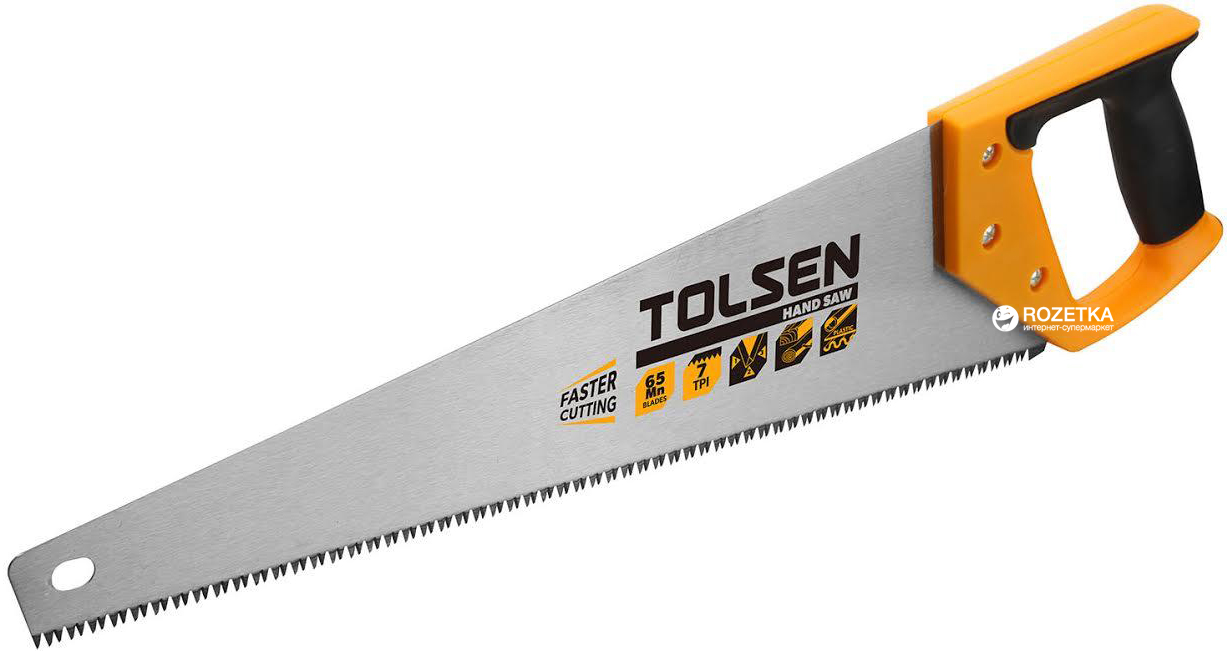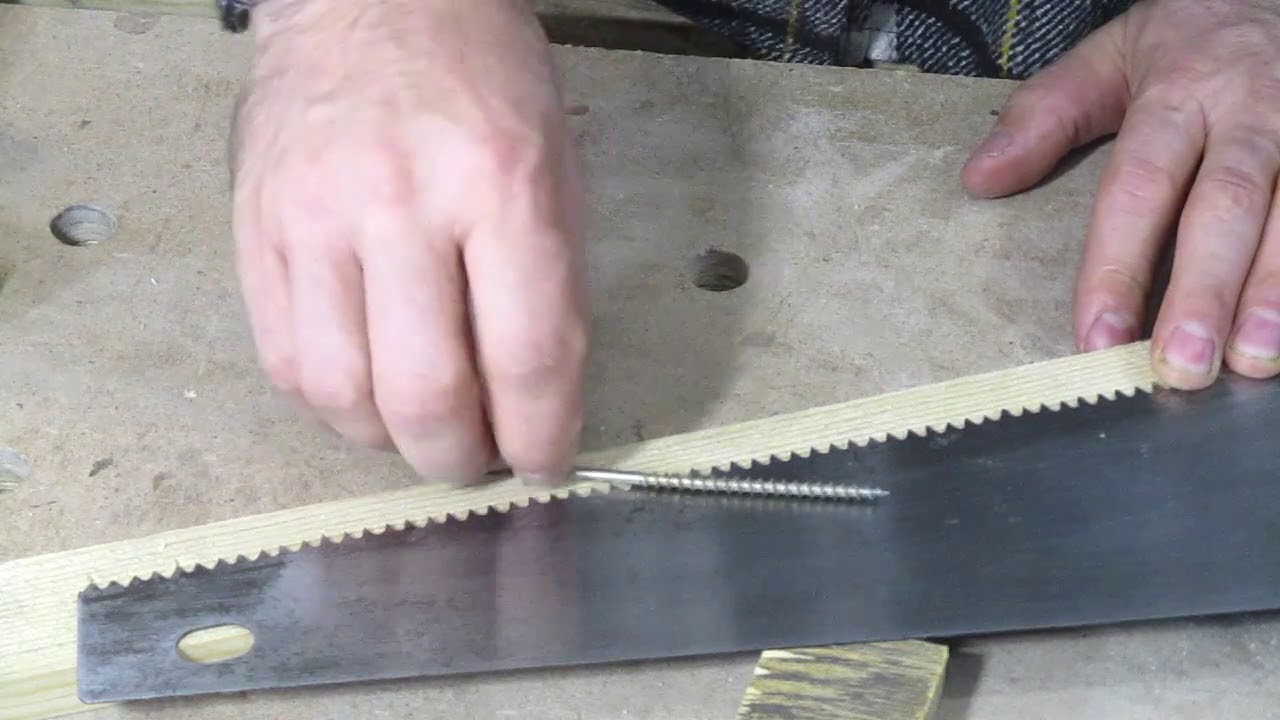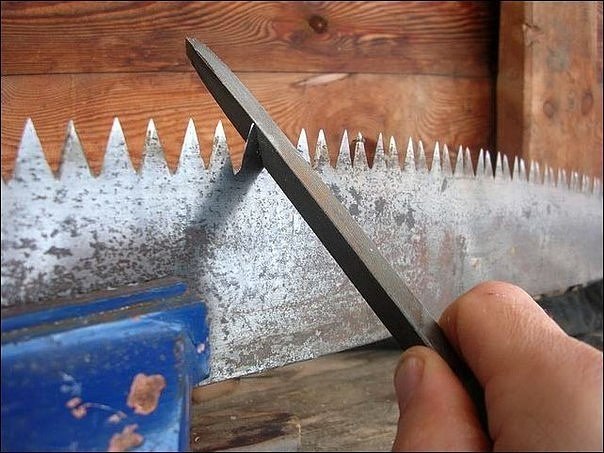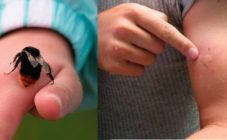Content:
The best device for processing wood and working with it is a hand tool - a hacksaw for wood. Like any other tool in the household, this one also requires attention and care for trouble-free operation for a long time, so the owner should know the main "symptoms" when it is time to do it and how to sharpen a hacksaw at home.
Appointment and device of a hacksaw for wood
Depending on the type of use, hacksaws are divided into types:
- Small, mainly used for pruning, cutting a small-diameter tree, usually young, which grows where it does not belong.
- Medium hacksaws, which are used for fruit trees in adulthood (pear, apple or plum and the like), large beams 10-40 cm.
- Large tools are used to cut large trees, sleepers and similar building materials, but no more than 40-50 cm in diameter or on the larger side, otherwise the blade will not be enough.
Why sharpen a hacksaw on wood
Anyone who saws firewood and cuts trees can definitely not do without a hacksaw for wood processing. To work with wood and carefully saw off the necessary parts from wood, the hacksaw is helped by the set teeth with sharpened edges. The sharper the teeth on the blade, the better and smoother the saw cuts. At the same time, thanks to the handle, it is more convenient for the home craftsman to control the process, and the hacksaw itself, with a properly sharpened blade, will last a long time and safely.
Operated almost every season, this tool eventually deteriorates. The teeth on the blade become dull and rounded, working with it becomes unbearable and takes a lot of the employee's time and effort. In order for the tool to cut well, not get stuck in the tree, not dull faster (if the tooth is not sharpened, the dulling process is accelerated), it should be sharpened in a timely manner, while checking the setting of the teeth.
How to know when it's time to sharpen your teeth on a hacksaw blade
To understand when to sharpen a working tool, you must adhere to the following signs of a poor hacksaw, namely:
- When working with trees and wood products (especially hard species), the saw makes a dull sound, which is characteristic of tooth wear.
- A detailed examination shows that the tips of the teeth become rounded, which can lead to injury due to the tight movement of the blade and the possibility of its rebound when applying large forces.
- The hacksaw does not fulfill its purpose, or it does it with great effort on the part of the master.
Unlike the Druzhba two-handed saw, an ordinary hacksaw is more convenient to use, since only one person is needed to work with it.
How to set the teeth
Any sharpening of a hacksaw, whether it is a two-handed or one-handed saw, begins with a set of teeth 1.5-2 mm in different directions from each other. This layout will serve as a larger cut and faster removal of the sawdust outside, without clogging the work surface.
It is necessary to make the wiring at the same distance from each other with a special device that looks like a metal plate with a slot.In this case, the blade should be clamped in a vise so that the teeth barely protrude from the vise. The slot in the fixture is dimensioned to prevent incorrect bending of the teeth. It is enough to put the slot on each tooth in order, with further bending in the required direction (opposite to the chamfer on the tooth - it should look inward).
Saw sharpening
Everyone knows how to use it, but few people know how to sharpen a hacksaw at home correctly. Therefore, it is worth taking apart in order the process of sharpening a hand saw for wood processing and why it is needed.
Before you start sharpening the saw, you need to fix it firmly and securely in a vice, but with the teeth set apart.
When sharpening, you can use both needle files and small triangular files with a fine notch for grinding teeth.
The main stages of tool sharpening:
- It is necessary to take the file with one hand by the handle and the other by the tip of the working part. At the same time, it is imperative to monitor the saw tooth during the process so that the file does not jump out of your hands and your hand does not fall on the edge. For everyone, you should wear work gloves with a rubberized surface on the palm of your hand.
- Next, you need to set the angle to the eye, under which the hacksaw will be sharpened. Typically this angle ranges from 15 to 30 degrees. You can also use a special bar with 15, 30 and 60 degrees for a more precise sharpening process.
- Each movement of the file back and forth must be performed with constant pressure and the same number of repetitions on each link of the blade.
- Sharpening is carried out both on one side of the blade and on the other.
How to check if the saw is sharpened correctly
After the end of the process of sharpening a tool for working with wood, it is worth checking each tooth of the hacksaw for light. If shine is visible, the sharpening is done correctly, if not, then it is worth going over the "suspicious" teeth again. You should also look to see if the teeth on the blade have the same height. If they are higher or lower, this will lead to the fact that the quality of the cut will decrease, the wear of the blade will be unevenly distributed.
As a result, when sharpening a hacksaw blade, you need to adhere to the following recommendations:
- The canvas must be securely clamped in a vice without the slightest sign of slipping during the process.
- The workplace should be as illuminated as possible, this will not only allow you to work with the tool normally, but also protect your eyes from premature wearing of glasses.
- The depth of cut of the selected file depends only on the degree of bluntness of the teeth - the duller, the more “powerful” the tool is needed.
- Sharpening of metal occurs only when moving away from oneself and only in one direction. This prevents hand injury from accidentally touching the blade during movement.
- After the end of sharpening, it is necessary to check the quality of the work performed, and in case of irregularities, it is better to immediately modify it than then suffer in the process of sawing wood, especially hard species.
Any tool should be checked before and after work. Safety comes first! If with a hand tool, at best, there will be only a cut, then with an electric one it can end in injury for life. Therefore, it is recommended to inspect instruments before use.
All the recommendations and warnings will help to properly sharpen any hand saw for working with wood, and there will be no problems with determining the moment when it is worth doing it.
















